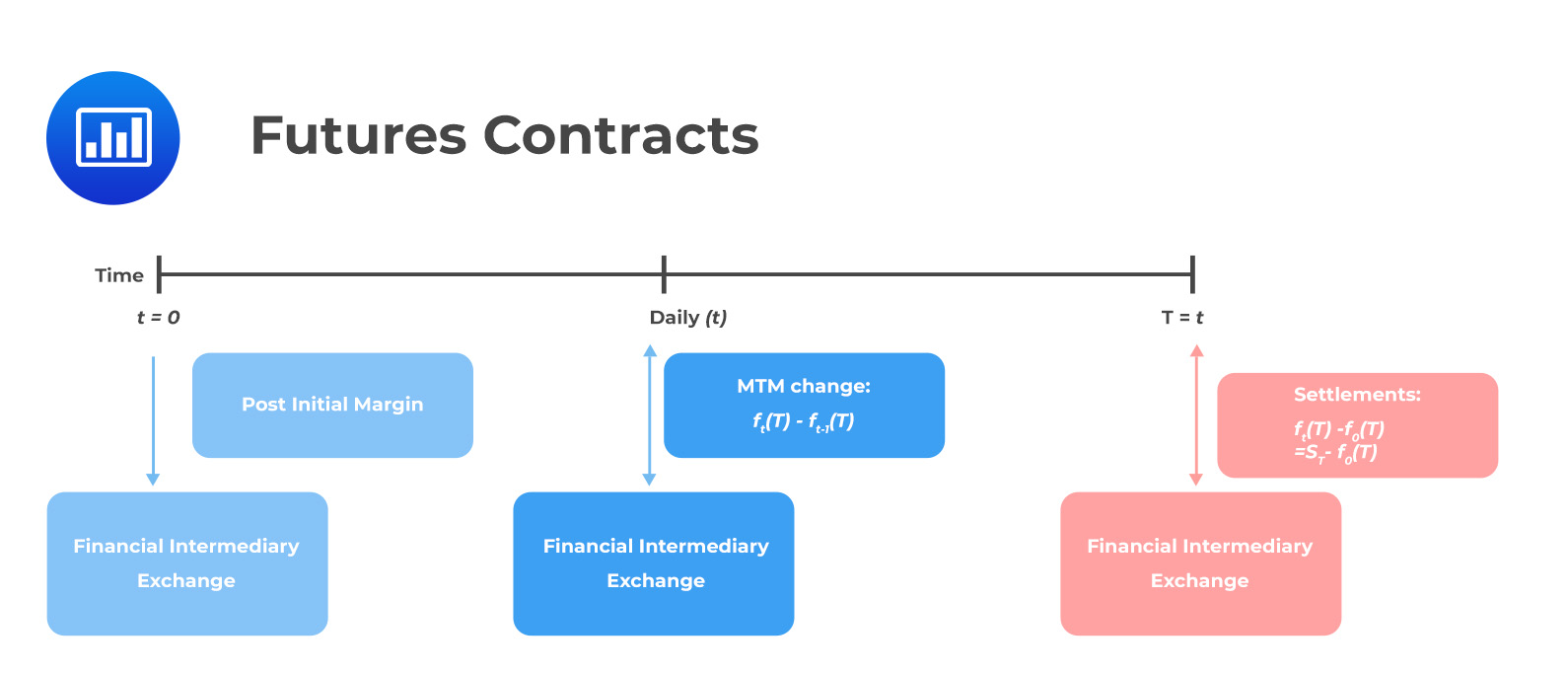

Finance
How Many Stocks Should I Own
Published: January 19, 2024
Discover the ideal number of stocks you should own and optimize your finance strategy. Learn how diversification can enhance your investment portfolio today.
(Many of the links in this article redirect to a specific reviewed product. Your purchase of these products through affiliate links helps to generate commission for LiveWell, at no extra cost. Learn more)
Table of Contents
- Introduction
- Importance of Diversification
- Factors to Consider When Deciding How Many Stocks to Own
- Risk Tolerance and Investment Goals
- Portfolio Size and Capital Allocation
- Time and Effort for Research and Monitoring
- Industry and Sector Diversification
- The Balance Between Quality and Quantity
- The Concept of the “Right Number” of Stocks
- Strategies for Building a Well-Diversified Portfolio
- Conclusion
Introduction
When it comes to investing in the stock market, one common question that often arises is, “How many stocks should I own?” While there is no one-size-fits-all answer to this question, deciding on the right number of stocks for your portfolio is a crucial step in building a successful investment strategy. The number of stocks you own can significantly impact the overall performance and risk profile of your portfolio.
A well-diversified investment portfolio is essential for managing risk and maximizing returns. Diversification refers to spreading your investments across different assets, industries, and sectors. By doing so, you reduce the impact of individual stock performances on your portfolio as a whole. This practice can help protect against volatility and potential losses, as well as increase the likelihood of capturing positive market trends.
However, the question of how many stocks to own is not a simple matter of “the more, the better.” It requires careful consideration of various factors, including your risk tolerance, investment goals, portfolio size, time and effort for research, and industry diversification.
In this article, we will explore the importance of diversification, factors to consider when deciding how many stocks to own, and strategies for building a well-diversified portfolio. Understanding these concepts will help you make informed decisions when it comes to constructing a robust and successful investment portfolio.
Importance of Diversification
Diversification is often referred to as the “only free lunch” in investing. It is a fundamental principle that helps mitigate risk and protect your portfolio from significant losses. The essence of diversification lies in spreading your investments across different asset classes, industries, and sectors to avoid overexposure to a single stock or sector.
By holding a diversified portfolio, you can reduce the impact of negative events affecting a specific stock or industry. For example, if you have a significant portion of your portfolio invested in a single company and that company experiences financial difficulties or faces regulatory issues, your entire portfolio value could be severely impacted. However, if you have a well-diversified portfolio, the negative impact of such an event would be limited as it gets offset by the positive performance of other investments.
Another benefit of diversification is the potential for maximizing returns. Different stocks perform well at different times, and by having a variety of stocks in your portfolio, you increase your chances of capturing the upside potential. While some stocks may be experiencing a downturn, others may be performing exceptionally well, effectively balancing out your overall returns.
Furthermore, diversification can provide stability during market downturns. During periods of economic uncertainty or volatility, certain sectors or industries may face challenges while others may be more resilient. By spreading your investments across multiple sectors, you can potentially reduce the impact of a downturn in any one sector on your overall portfolio performance.
It’s important to note that diversification does not guarantee profits or completely eliminate the risk of loss. However, it allows you to manage risk more effectively by allocating your investments across different types of assets and industries. It is a risk management strategy that aims to reduce the correlation between different investments within your portfolio, providing a degree of protection against market fluctuations.
In summary, diversification is crucial because it helps manage risk, minimize losses, and potentially enhance returns. By constructing a portfolio with a mix of assets, industries, and sectors, you create a robust foundation that can withstand unexpected events and market volatility.
Factors to Consider When Deciding How Many Stocks to Own
Deciding on the number of stocks to own in your portfolio requires careful consideration of various factors. While there is no definitive formula that works for everyone, the following factors should be taken into account:
- Risk Tolerance and Investment Goals: Your risk tolerance and investment goals play a significant role in determining the number of stocks to own. If you have a higher risk tolerance and are seeking aggressive growth, you may choose to own a larger number of stocks. On the other hand, if you have a lower risk tolerance and are more focused on preserving capital, a smaller number of stocks may be appropriate.
- Portfolio Size and Capital Allocation: The size of your portfolio and how much capital you have available for investment is another crucial factor. If you have a larger portfolio, you may have the ability to diversify across a larger number of stocks. Conversely, if your portfolio is smaller, you may need to be more selective and focus on a smaller number of high-quality stocks.
- Time and Effort for Research and Monitoring: Owning stocks requires time and effort for research, analysis, and monitoring. Consider how much time you can dedicate to thoroughly researching and staying updated on each stock in your portfolio. If you have limited time, owning too many stocks may become overwhelming and hinder your ability to make informed investment decisions.
- Industry and Sector Diversification: It is essential to diversify not only across individual stocks but also across different industries and sectors. By owning stocks from different sectors, you reduce the risk of sector-specific downturns impacting your portfolio. Consider the diversity of sectors represented in your portfolio and ensure there is a balanced allocation across various industries.
- The Balance Between Quality and Quantity: Rather than chasing a high number of stocks, focus on the quality of the companies you invest in. It’s better to own a smaller number of well-researched and fundamentally strong companies than a larger number of lower-quality stocks. Quality should always take precedence over quantity in your stock selection process.
- The Concept of the “Right Number” of Stocks: While there is no universally accepted “right number” of stocks to own, diversification generally suggests owning at least 10-15 stocks to mitigate idiosyncratic risk. However, it’s crucial to strike a balance and avoid over-diversification, as owning too many stocks can reduce the potential for significant outperformance.
Ultimately, the number of stocks to own in your portfolio should be based on a careful evaluation of these factors, combined with your own personal preferences and investment strategy. It’s essential to find a balance that aligns with your risk tolerance, investment goals, and available resources while ensuring effective diversification to protect your portfolio and capitalize on potential opportunities.
Risk Tolerance and Investment Goals
When deciding how many stocks to own in your portfolio, it is crucial to consider your risk tolerance and investment goals. These factors will guide your decision-making process and help determine the appropriate number of stocks that align with your desired outcomes.
Risk tolerance refers to your ability and willingness to handle fluctuations in the value of your investments. It is influenced by factors such as your financial situation, time horizon, and emotional capacity to handle market volatility. Understanding your risk tolerance is essential because it determines the level of risk you are comfortable taking on in your investment portfolio.
If you have a higher risk tolerance, you may be more inclined to own a larger number of stocks. This approach allows you to potentially capture greater returns by investing in a broader range of companies, including those with higher growth potential but also greater volatility. On the other hand, if you have a lower risk tolerance, you may prefer to own a smaller number of stocks or focus on more stable, established companies with lower perceived risk.
Similarly, your investment goals play a significant role in determining the number of stocks to own. Your goals could include capital preservation, income generation, wealth accumulation, or a combination of these objectives. For example, if your primary goal is to generate income, you may choose to have a more concentrated portfolio of dividend-paying stocks. On the other hand, if your goal is long-term wealth accumulation, you may opt for a more diversified portfolio that includes stocks with growth potential.
It is important to align the number of stocks in your portfolio with your risk tolerance and investment goals. This alignment ensures that your portfolio is tailored to your personal financial aspirations while managing the level of risk you are comfortable with.
Keep in mind that risk tolerance and investment goals can evolve over time. It is important to regularly reassess and reevaluate your tolerance for risk and adjust your portfolio accordingly. As your financial situation changes or as you progress towards your investment goals, you may need to revisit the number of stocks in your portfolio and make adjustments to align with your evolving needs and objectives.
Overall, considering your risk tolerance and investment goals is crucial in determining the number of stocks to own. By understanding your appetite for risk and having a clear understanding of your desired outcomes, you can construct a portfolio that reflects your individual preferences and aspirations while balancing the potential rewards and risks associated with stock ownership.
Portfolio Size and Capital Allocation
When deciding on the number of stocks to own in your portfolio, the size of your portfolio and how you allocate your capital are important considerations. Portfolio size refers to the total value of your investment portfolio, while capital allocation refers to how you distribute your invested capital among different stocks.
The size of your portfolio can influence the number of stocks you own. If you have a larger portfolio, you may have more capital available to allocate across a greater number of stocks. This can provide you with the opportunity to achieve greater diversification and spread your risk across a broader range of investments. On the other hand, if your portfolio is smaller, you may need to be more selective with your investments and focus on a smaller number of high-quality stocks.
Capital allocation is another important factor to consider. How you distribute your invested capital among different stocks can impact the risk and potential returns of your portfolio. A well-diversified portfolio typically allocates an appropriate portion of capital to different stocks, industries, and sectors. This ensures that your portfolio is not overly reliant on the performance of a small number of stocks or a single sector.
One common rule of thumb is to avoid allocating too much capital to a single stock. This helps to mitigate the risk of significant losses if that particular stock underperforms or faces unexpected challenges. By spreading your capital across multiple stocks, you reduce the impact of any individual stock on your overall portfolio performance. However, it is important to strike a balance between diversification and concentration. Over-diversification can dilute potential returns, while excessive concentration can increase the risk of significant losses.
Ultimately, the size of your portfolio and your capital allocation strategy should align with your risk tolerance, investment goals, and personal circumstances. It is important to evaluate your financial situation, available capital, and your comfort level in managing a certain number of stocks. This evaluation will help ensure that your portfolio’s size and capital allocation are in line with your overall investment strategy.
Regularly assessing your portfolio size and capital allocation is also important as your financial situation and investment goals may change over time. As your portfolio grows or as you approach different life stages, you may need to adjust your allocation and the number of stocks you own to reflect your evolving circumstances and objectives.
In summary, the size of your portfolio and how you allocate your capital are significant factors to consider when deciding how many stocks to own. Understanding your portfolio size, capital availability, and risk preferences will help you strike the right balance between diversification and concentration, ultimately maximizing the potential rewards while managing the associated risks.
Time and Effort for Research and Monitoring
Owning stocks requires time and effort for proper research, analysis, and monitoring. It is important to consider your available time and resources when deciding on the number of stocks to own in your portfolio.
The more stocks you own, the more time and effort it will take to stay informed about each company’s performance, news, and other relevant factors. Conducting thorough research on individual stocks is essential to make informed investment decisions. This includes analyzing financial statements, evaluating industry trends, and staying updated on company news and developments. It is important to understand the fundamental aspects of each stock and monitor their performance regularly.
If you have limited time available for research and monitoring, owning too many stocks can become overwhelming. Each additional stock adds to the complexity of staying informed and making timely investment decisions. In such cases, it may be more practical to focus on a smaller number of high-quality stocks that you can thoroughly analyze and monitor effectively.
On the other hand, if you have the time and resources to dedicate to thorough research and monitoring, you may be able to handle a larger number of stocks in your portfolio. This approach allows you to diversify across more companies and potentially capture a broader range of investment opportunities. However, it is important to recognize that owning more stocks requires consistent monitoring to stay informed about market and company-specific developments.
It is also crucial to consider the level of complexity associated with the stocks you choose to own. Some stocks may require more in-depth research and monitoring due to factors such as their industry dynamics, global economic conditions, or regulatory complexities. Understanding the level of effort required for each stock and considering your available time and resources will help you maintain a well-informed and actively managed portfolio.
Additionally, it is important to remember that investing in stocks should not be treated as a passive endeavor. Regular monitoring of your portfolio’s performance, the market, and any changes that may impact your investments is vital. Staying updated on news, attending company conferences or webinars, and monitoring key indicators can provide valuable insights for making informed decisions.
In summary, the number of stocks you own should be within the limits of the time and effort you can dedicate to effective research and monitoring. It is better to have a smaller number of well-researched and closely monitored stocks than to own a larger number of stocks that receive insufficient attention. Carefully consider your available time and resources to ensure that you can maintain an actively managed portfolio that aligns with your investment goals and risk tolerance.
Industry and Sector Diversification
When deciding how many stocks to own in your portfolio, it is essential to consider industry and sector diversification. Holding stocks from a variety of industries and sectors can help spread risk and enhance portfolio stability.
Different industries and sectors have unique characteristics and are influenced by different factors. By diversifying across industries and sectors, you can reduce the impact of a downturn in any particular industry on your overall portfolio. For example, if you own stocks exclusively in the technology sector and that sector experiences a significant decline, your portfolio could suffer substantial losses. However, by holding stocks in other sectors such as healthcare, finance, or consumer goods, the negative impact of a specific sector’s downturn on your portfolio can be mitigated.
Industry and sector diversification also allows you to capitalize on different market trends and economic cycles. Some industries or sectors may perform well at specific times, while others may face challenges. By owning stocks across a range of industries and sectors, you increase your chances of capturing positive performance in different areas of the market. This can help smooth out the overall returns of your portfolio and potentially enhance long-term gains.
However, it’s important to strike a balance when diversifying across industries and sectors. While it’s beneficial to spread your investments, over-diversification can dilute potential returns and make it difficult to keep track of each industry’s dynamics. Owning too many stocks from various industries can lead to a portfolio that closely mirrors the overall market performance, resulting in average returns rather than outperforming the market.
One approach to achieving industry and sector diversification is by focusing on broad sectors such as technology, healthcare, consumer staples, industrials, and finance. You can allocate a portion of your portfolio to each sector, ensuring a balanced representation. Within each sector, you can further diversify by owning stocks from different sub-industries or companies with varying business models and risk profiles.
It’s important to conduct thorough research on each industry and sector you plan to invest in. Understand the key drivers, trends, and risks associated with each sector to make informed investment decisions. Assess the correlation between industries and sectors to ensure that your portfolio truly reflects diversification rather than holding stocks that move in tandem with each other.
In summary, industry and sector diversification is a crucial aspect of building a well-balanced portfolio. By owning stocks from different industries and sectors, you can reduce risk, capture positive market trends, and potentially enhance overall portfolio performance. However, it’s important to strike a balance and avoid over-diversification to ensure you can effectively manage and monitor your investments.
The Balance Between Quality and Quantity
When deciding on the number of stocks to own in your portfolio, it is essential to find the right balance between quality and quantity. This balance ensures that you have a portfolio that is well-diversified while also maintaining a focus on investing in high-quality stocks.
Quality stocks are those that exhibit strong financials, sustainable competitive advantages, and a history of consistent performance. These stocks are typically from companies with solid management teams, strong market positions, and a track record of delivering shareholder value. Investing in quality stocks can provide stability, minimize downside risk, and offer the potential for long-term growth.
On the other hand, quantity refers to the number of stocks you own in your portfolio. Increasing the number of stocks can contribute to diversification and reduce the risk associated with holding a concentrated portfolio. However, owning too many stocks can dilute the potential returns and make it difficult to effectively monitor and manage each investment.
It is important to prioritize quality over quantity when building your portfolio. Instead of chasing a high number of stocks, focus on investing in a select number of high-quality companies. By concentrating your investments in companies that you have thoroughly researched and are confident in, you can potentially achieve better returns and lower the risk of poor performance.
Quality stocks tend to exhibit lower volatility and are more resilient during market downturns. Investing in a smaller number of quality stocks allows you to better understand the companies, their industry dynamics, and overall market trends. This understanding gives you an advantage in making informed investment decisions and being more proactive in managing your portfolio.
It’s important to conduct thorough research and analysis when selecting quality stocks. Evaluate factors such as the company’s financial health, competitive position, growth prospects, and management team. Look for indicators of consistent earnings growth, strong profitability, and a history of generating shareholder value through dividends or share repurchases.
While focusing on quality, it is still important to have a level of diversification in your portfolio. Owning a select number of high-quality stocks across different sectors and industries can provide the benefits of diversification while maintaining a focus on quality investments. By spreading your investments across different sectors, you reduce the risk of exposure to a single sector’s challenges while still maintaining a concentrated portfolio of quality stocks.
In summary, striking the right balance between quality and quantity is crucial when deciding on the number of stocks to own in your portfolio. Focus on investing in high-quality companies that align with your investment goals and risk tolerance. By prioritizing quality and maintaining a level of diversification, you can build a portfolio that offers the potential for attractive returns while managing risk effectively.
The Concept of the “Right Number” of Stocks
When it comes to deciding on the number of stocks to own in your portfolio, there is no universally accepted “right number”. The optimal number of stocks can vary depending on several factors, including your risk tolerance, investment goals, portfolio size, and available resources.
While diversification is important, it’s crucial to strike a balance and avoid over-diversification. Owning too many stocks can make it challenging to effectively monitor and manage each investment. Additionally, over-diversification can lead to a portfolio that closely mirrors the overall market performance, potentially resulting in average returns. On the other hand, owning too few stocks can expose your portfolio to undue risk if any particular stock underperforms or faces unexpected challenges.
One commonly cited guideline is to own a minimum of 10 to 15 stocks to achieve meaningful diversification. This number is often considered sufficient to mitigate the risk associated with individual stocks, as idiosyncratic risk tends to decrease as you hold a larger number of stocks. However, this guideline is not set in stone.
Ultimately, the right number of stocks to own depends on your individual circumstances and preferences. It is important to assess your risk tolerance, investment goals, available time, and resources for research and monitoring. Some investors may feel comfortable owning a larger number of stocks, while others may prefer a smaller, more concentrated portfolio.
When deciding the “right number” of stocks, consider the following points:
- Risk Tolerance: Assess your ability and willingness to handle fluctuations in individual stock values. A higher risk tolerance may allow for a larger number of stocks, while a lower risk tolerance may warrant a more focused selection.
- Investment Goals: Align the number of stocks with your investment objectives. If your goal is long-term growth, you may choose to own a larger number of stocks. If you prioritize income, a smaller number of dividend-paying stocks may be appropriate.
- Portfolio Size: Consider the size of your portfolio and the capital you have available for investment. A larger portfolio may allow for greater diversification, while a smaller portfolio may require a more focused selection.
- Resources for Research and Monitoring: Evaluate the time and effort you can dedicate to researching and monitoring stocks. Owning a larger number of stocks may require more time and resources for staying informed.
- Industry and Sector Exposure: Ensure that your portfolio is sufficiently diversified across different industries and sectors to mitigate risk. Assess the correlation between industries and sectors to avoid overexposure to specific areas of the market.
Ultimately, the “right number” of stocks is subjective and should be based on a careful evaluation of your individual circumstances and investment strategy. It is crucial to find a balance between diversification and effective management of your portfolio, aligning with your risk tolerance, investment goals, and available resources.
Strategies for Building a Well-Diversified Portfolio
Building a well-diversified portfolio is key to managing risk and maximizing returns. Here are some strategies to consider when constructing a portfolio with a broad range of investments:
- Asset Allocation: Determine the appropriate allocation of assets among different asset classes, such as stocks, bonds, and cash. This provides a foundation for diversification and helps balance risk and return based on your risk tolerance and investment goals.
- Spread Investments across Industries and Sectors: Invest in companies from diverse industries and sectors. This ensures that your portfolio is not overly exposed to the performance of a specific industry or sector. Consider industries that are complementary and have low correlation to optimize diversification.
- Consider Different Market Capitalizations: Include stocks of various market capitalizations, such as large-cap, mid-cap, and small-cap stocks. Each category can offer different risk-return characteristics, providing additional diversification within your portfolio.
- Focus on Quality Stocks: Prioritize quality over quantity by investing in high-quality companies. Look for stocks with strong financials, solid management teams, and sustainable competitive advantages. These tend to be more resilient during market downturns and can deliver consistent returns over the long term.
- Use Exchange-Traded Funds (ETFs) or Mutual Funds: Consider using ETFs or mutual funds that provide exposure to a diverse range of stocks or asset classes. These investment vehicles offer instant diversification with a single investment and are managed by professional fund managers.
- Rebalance Regularly: Periodically review and rebalance your portfolio to maintain the desired asset allocation and diversification. As some investments outperform or underperform others, rebalancing helps bring your portfolio back in line with your desired risk profile.
- Consider International Investments: Include international stocks or funds to diversify geographically. Investing in different countries can help reduce country-specific risks and provide exposure to global market trends and economic cycles.
- Avoid Over-Concentration: Ensure that no single stock or sector dominates your portfolio. By limiting your exposure to any one investment, you reduce the potential impact of a significant loss in a specific holding.
- Stay Informed: Keep up with market trends, economic conditions, and company news. Regularly analyze your portfolio’s performance and make informed decisions based on changing market dynamics and your investment goals.
Remember, no investment strategy is entirely risk-free, and diversification does not guarantee profits. However, a well-diversified portfolio can help mitigate risk and provide the potential for more stable long-term returns.
It is recommended to consult with a financial advisor who can provide personalized guidance tailored to your specific circumstances and goals. Their expertise can help you develop a comprehensive investment strategy that incorporates diversification effectively.
Conclusion
Deciding on the number of stocks to own in your portfolio is a crucial step in building a successful investment strategy. While there is no one-size-fits-all answer to this question, there are several factors to consider in order to achieve the right balance between risk management and potential returns.
Diversification is a key principle in portfolio construction, as it helps spread risk and minimize the impact of individual stock performances on the overall portfolio. By owning stocks from different industries, sectors, and market capitalizations, you can capture opportunities and reduce the vulnerability to specific market fluctuations.
While diversification is important, it should not come at the expense of quality. Prioritizing high-quality stocks that align with your investment goals and risk tolerance is crucial. Thorough research and analysis can help identify companies with solid fundamentals and sustainable competitive advantages.
The concept of the “right number” of stocks is subjective and depends on individual circumstances. Factors such as risk tolerance, investment goals, portfolio size, available resources, and industry diversification should be taken into account. It is important to strike a balance between diversification and effective management, avoiding overdiversification or concentration in a few stocks.
Strategies for building a well-diversified portfolio include asset allocation, spreading investments across different industries and sectors, considering market capitalizations, prioritizing quality stocks, using ETFs or mutual funds, regular portfolio rebalancing, international investments, and staying informed about market trends and economic conditions.
In conclusion, constructing a well-diversified portfolio requires careful consideration of various factors and a focus on both diversification and quality. By understanding your risk tolerance, investment goals, and market dynamics, you can build a portfolio that aims to minimize risk and maximize returns over the long term. Regular monitoring and adaptation to changing market conditions will help ensure your portfolio remains aligned with your objectives. Seek professional guidance, if needed, to optimize your investment strategy and make informed decisions that align with your financial goals.














